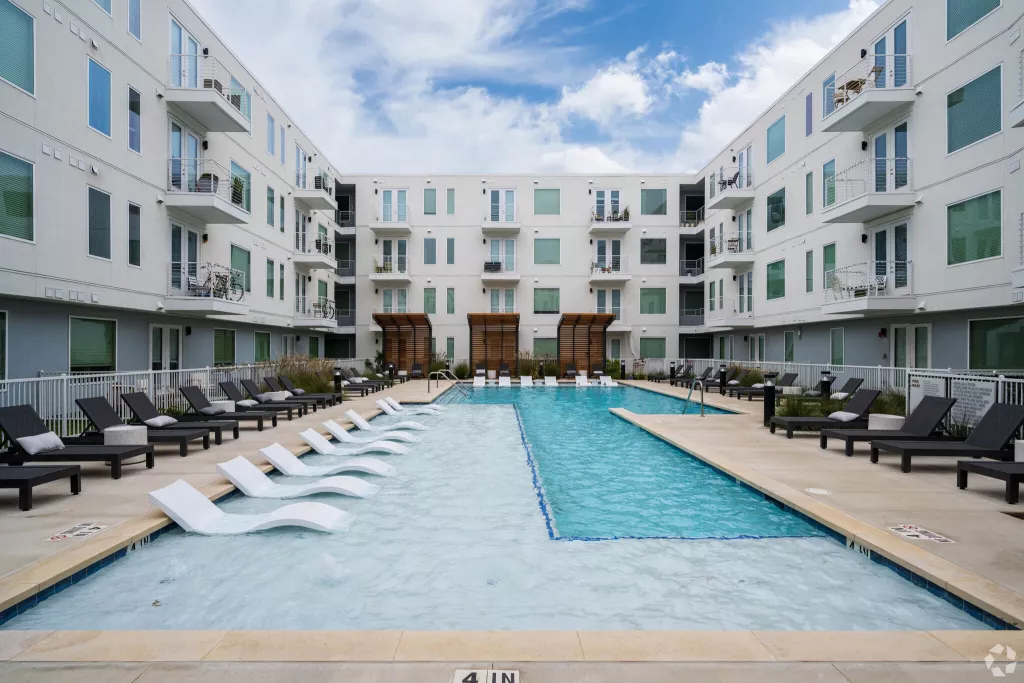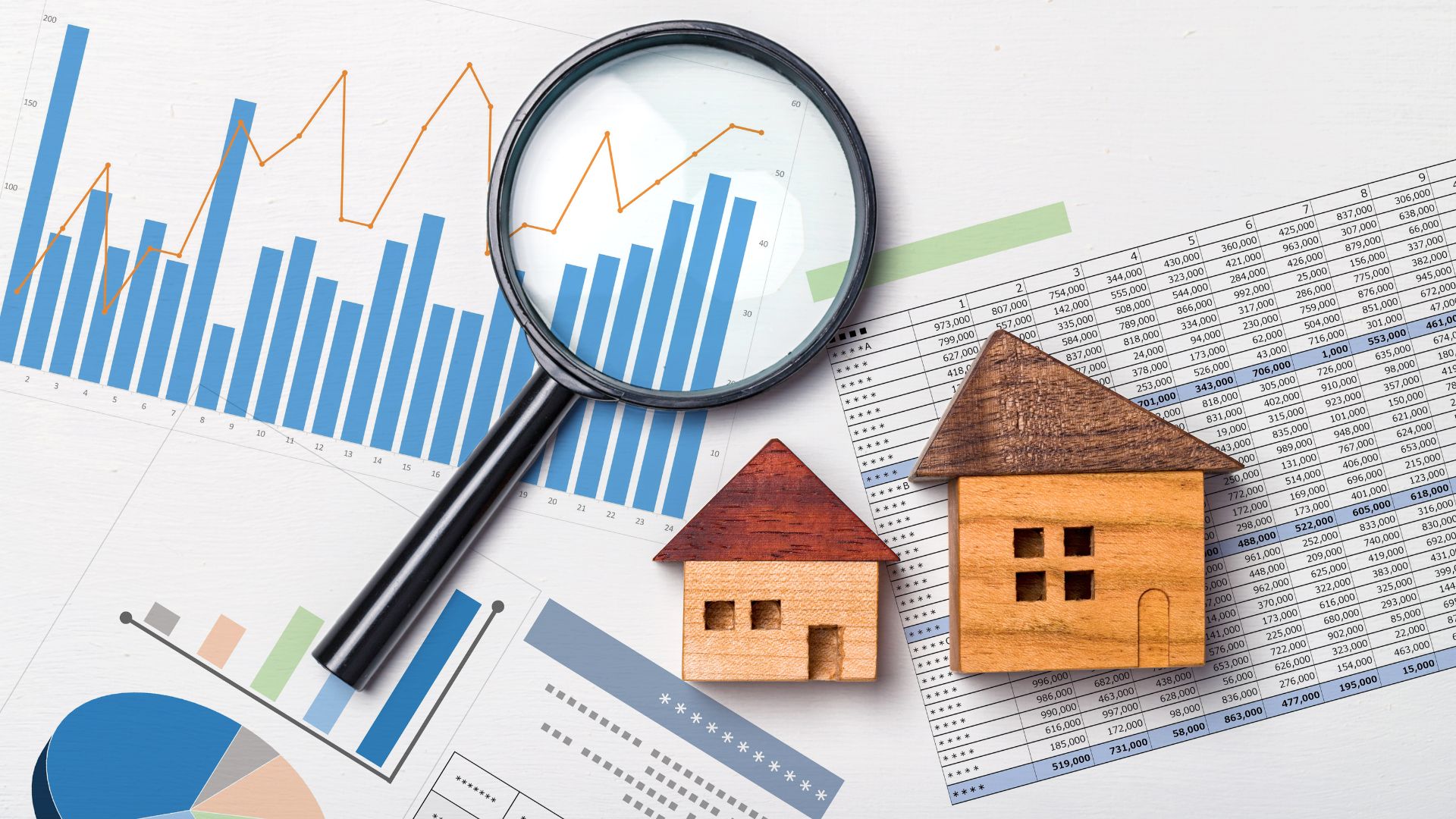A Business Plan for Multifamily Investing
Over the last six months or so, our 8-year old son has really gotten into swimming. He’s joined a new swim team and is enjoying going to the pool three days a week for practice. I’ve spent a decent amount of time watching him swim at a few meets and picking him up from practice–and it’s fun to see how much stronger and faster he’s gotten. That pool time is probably why this article has a swimming theme–but it’s the perfect analogy for the way we’ve been thinking about our business plan lately.
The phrase staying in your swim lane is something we talk about a lot at Wildhorn Capital. Defining and understanding where we are going as a company–and then staying in that lane with your head down and your legs kicking. It’s the best way to be excellent at something. A singular focus and a narrow vision. And it’s an obsession of ours.
As you probably already know, that focus for us is Central Texas. And multifamily. We’re focused on buying and operating apartment assets in Austin and San Antonio. To date, that has largely been focused on the value-add space–in what can be considered our best (current) swimming stroke. But we are intent to round out our skillset and be a complete operator who can compete in the Individual Medley (where you have to swim all the strokes).
We are clear that our Swim Lane is Central Texas–there isn’t a debate about that. We’ve written and talked about that a lot in the past. Cooper and I are both born and raised Austinites (Unicorns as they call us) which gives us a competitive advantage we can’t ignore. And as our City and Region grow and mature, we see lots of opportunities within our multifamily investing world. Not all of them are value-addValue-add is a strategy where an investor or property owner seeks to increase the value of a property by making significant improvements or changes to it. The goal is to enhance the property's appeal, functionality, and income-generating potential, which can lead to higher rental income, increased property valuation, and improved overall performance. View Definition in nature. But they are multifamily assets and real estate business plans we believe in and will invest our personal capital in.
In today’s article we’re going to highlight the four business plans that we’re focused on today as we continue to strive to be the best local multifamily operator in town. If we’re going to be the best all-around swimmer (or real estate firm if you prefer) in Austin, we better be proficient in more than one stroke.
Shorter Term Value-add Deals
This is a familiar business plan for many of you, and where the bulk of our portfolio exists today. This involves us buying existing assets and improving them. Whether that be through operations, unit renovations or exterior and amenity enhancements (and ideally all of these), we take a 5 year business plan to slowly and steadily improve upon the asset that we purchase. We love this space because its evergreen–assets that are built today will need improvement and enhancements 10-15 years from now, so there will always be value-add product out there. Today we’re looking at assets built anywhere from the 1980’s to the mid-2000’s (where we are increasingly investing our time). From a return perspective, we are targeting 5-7 year holds that can produce low teen’s IRR’s where investors can expect to nearly double their money in that time frame. It’s been a tried and true business plan over the last 10 years. And those opportunities will continue to exist.
Long-term “Core Plus” Holds
Good value-add deals are phenomenal. We’ve been able to consistently execute against our plans in that space and deliver IRR’s averaging over 25% over the last 5 years. At the same time, we are long-term believers in Austin and San Antonio and think their best days are still in front of them. We have many investors that feel the same way, and are asking for deals that have longer-term horizons. Investments that take advantage of owning a hard asset in an inflationary environment. And don’t necessitate a sale to create the value.
Enter our Longer-term focus. Here we’re focused on newer built (say 2008-2015) assets that are located in great areas. Our business plan is to put longer-term, lower leveraged financing in place and operate the heck out of them. The assets will produce a nice yield (due to being lower levered) and have much less risk, and lower operating costs. And by focusing on really quality submarkets and locations these assets will appreciate over time. The exit strategy is to sell to a value-add group when we’re done with it, as it will be 10-15 years old at that point and ready for some improvements. In the interim, investors are comforted knowing they will get consistent distributions backed by a hard asset. Many have likened these positions to some of the dividend producing stocks in their portfolio–with higher dividends and less downside. Owning real estate for the long-haul continues to be one of the most tried and trued methods of creating and protecting wealth.
Lease-Up New Construction
We aren’t developers, at least yet. But we are friends with a bunch of them. They are experts at building product that the modern renter desires with beautiful layouts, amenities and creature comforts built in. Typically they partner with a Property Management company to lease-up their buildings as fast as humanly possible–with the goal of selling it once the building is full. But, operating an asset isn’t where their heart, or expertise, lies. They want to keep building, finish one and move on to the next one. Over the last 18 months, we’ve purchased three assets that fall into this bucket. We have been able to approach a developer and buy a brand new asset before construction is complete. They stay on to finish the building, but we are able to take over the day to day leasing, setting rents and starting to think about it with a longer-term mindset than the typical developer who just wants it full at nearly any cost.
We take the lease-up risk, but don’t have any construction risk. And what we’ve found is that by being more attentive on the lease-up side, we’re actually able to create more value there than previously existed. It’s a win-win scenario, as the developer crystalizes their returns for their investors sooner than previously possible while focusing on what they love to do; we are able to create extra value through the leasing and operational lens and influence decisions from Day 1 rather than Year 2 when the initial leases would start to roll off.
Our business plan also has optionality. We can execute the lease up and hold for a year or two before selling; or we can get it stabilized and hold it for many years–following the script from the Core-Plus swim stroke reference earlier. Of our three assets in this swim lane, we have one pegged for a shorter term 2-year execution, one set to be owned for 10 years and one that we haven’t quite decided on. But the beauty is we have options, own a brand new beautiful asset with no maintenance issues and sit in the best market in the country.
Raw Land
Just by being active in Austin, San Antonio and the areas between the two we stumble upon interesting deals. With the continued growth and growth projections of both cities, we’ve seen a lot of land deals transacting as developers are thinking long(er) term about the future city planning. Some of that is earmarked for housing–both single family and multifamily–some for Industrial use, commercial, office, etc. If we’re going to double in size over the next 10-15 years as projections suggest, the cities will grow. And raw land will be developed in time. Again, Wildhorn isn’t a developer. But we do think we’re relatively smart. And we know we’re in tune with our local market. As we’ve been studying this space and watching deals transact, there have been a couple that have been interesting to us, where we instantly recognize value. Whether the business plan is to immediately turn around and sell it to a developer, to parcel it out into smaller deals, or look at bringing in needed utilities to make it buildable there is inherent value in some of these deals.
After seeing enough of these pass through our desk, we are now actively pursuing some opportunities in this space; we’re not afraid of them and know when we find the right sized deal with a clear business plan, its something we plan to act on
Clearly it’s a different investment strategy and risk profile–which the deal terms and returns would certainly account for. But we’re confident in what we’ve seen and would be doing to stand behind it for our investors–as a great investment opportunity in Central Texas.
Your Own Business Plan
At the end of the day, we’re spending a lot of time in the pool. Trying to perfect each of our swimming strokes. Each one is differentiated and unique. But the water is always refreshing, and as we improve at one stroke we see dividends in the other strokes as well. We’d love to talk with you about any or all of these strokes–which ones are most appealing, and why. Come join us at the pool and we can discuss after a few laps.

Andrew Campbell is a native Austinite and Managing Partner at Wildhorn. He is a real estate entrepreneur who first broke into the business in 2008 as a passive investor. In 2010 he transitioned into active investing and management of a personal portfolio that grew to 76 units across Austin and San Antonio. He earned his stripes building and managing his personal portfolio before founding Wildhorn Capital and focusing on larger multifamily buildings. At Wildhorn, he is focused on Acquisitions and maintaining Investor Relations, utilizing his marketing and communications background to build long-term relationships.








